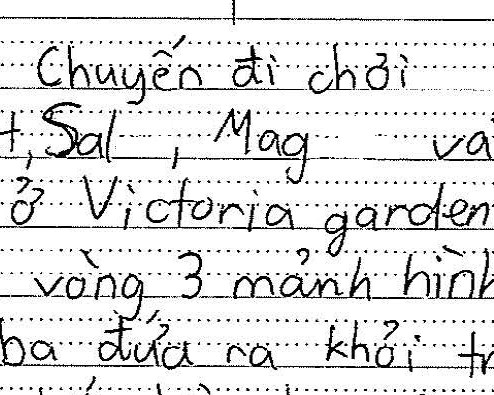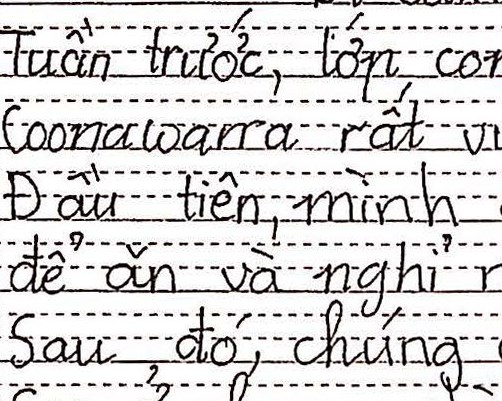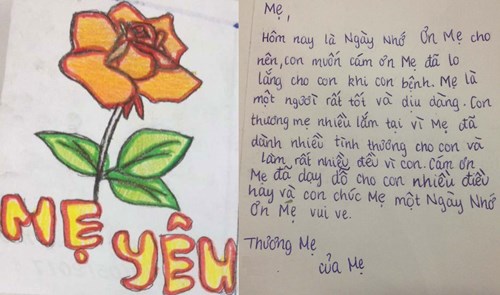Languages: Vietnamese - Satisfactory - Years 5 and 6
Portfolio summary
This portfolio of student work shows that the student uses spoken and written Vietnamese for classroom interactions and to share ideas and opinions and express feelings (WS1, WS3, WS4, WS5, WS6). The student exchanges information about aspects of their daily life, school, friends and leisure activities (WS1, WS2, WS3, WS5). The student makes shared decisions and arrangements, organises events and completes transactions (WS1). When participating in classroom and collaborative activities, the student asks and responds to questions, and expresses opinions (WS1). The student uses specific features of pronunciation and intonation, including tones, when interacting (WS1, WS6). The student locates, classifies and compares information from a range of familiar texts, and shares information and ideas on topics of interest in paragraphs or short texts selected to suit different audiences (WS4, WS6). The student responds to imaginative texts by describing key elements, and creates short imaginative texts or alternative versions of texts they have heard, read or viewed (WS2, WS3, WS4, WS5, WS6). The student uses everyday language and topic-specific vocabulary to express ideas and opinions and discuss events in time and place (WS1, WS3, WS4, WS6). The student constructs sentences using nouns, pronouns, adjectives, adverbs and familiar expressions and idioms to suit the context and purpose of communication (WS1, WS2, WS3, WS4, WS5, WS6). The student uses simple sentences and forms compound sentences using conjunctions (WS1, WS2, WS3, WS4, WS5, S6). When writing, the student applies appropriate spelling and punctuation in a range of sentence types (WS2, WS3, WS4, WS5, WS6). The student translates simple texts from Vietnamese into English and vice versa, identifying words that are easy or difficult to translate, and creates bilingual texts for their own language learning and for the school community (WS6). The student identifies ways in which their family origins, traditions and beliefs impact on their identity (WS3) and influence how they communicate in Vietnamese and English (WS6).
The student forms new words by adding or changing tone markers, initial consonants and vowels and identifies how changes to pitch affect the meaning of words (WS2, WS4, WS6). The student compares the structure and language features of familiar texts and identifies ways in which audience, context and purpose influence language choices (WS5). The student identifies ways in which language use varies according to context and situation (WS5). The student provides examples of how the Vietnamese language has changed over time and identifies ways in which regional dialects and accents have influenced the language. The student identifies language choices that reflect the influence of Vietnamese values and beliefs, and applies culturally appropriate behaviours and language when communicating in a range of familiar situations.





